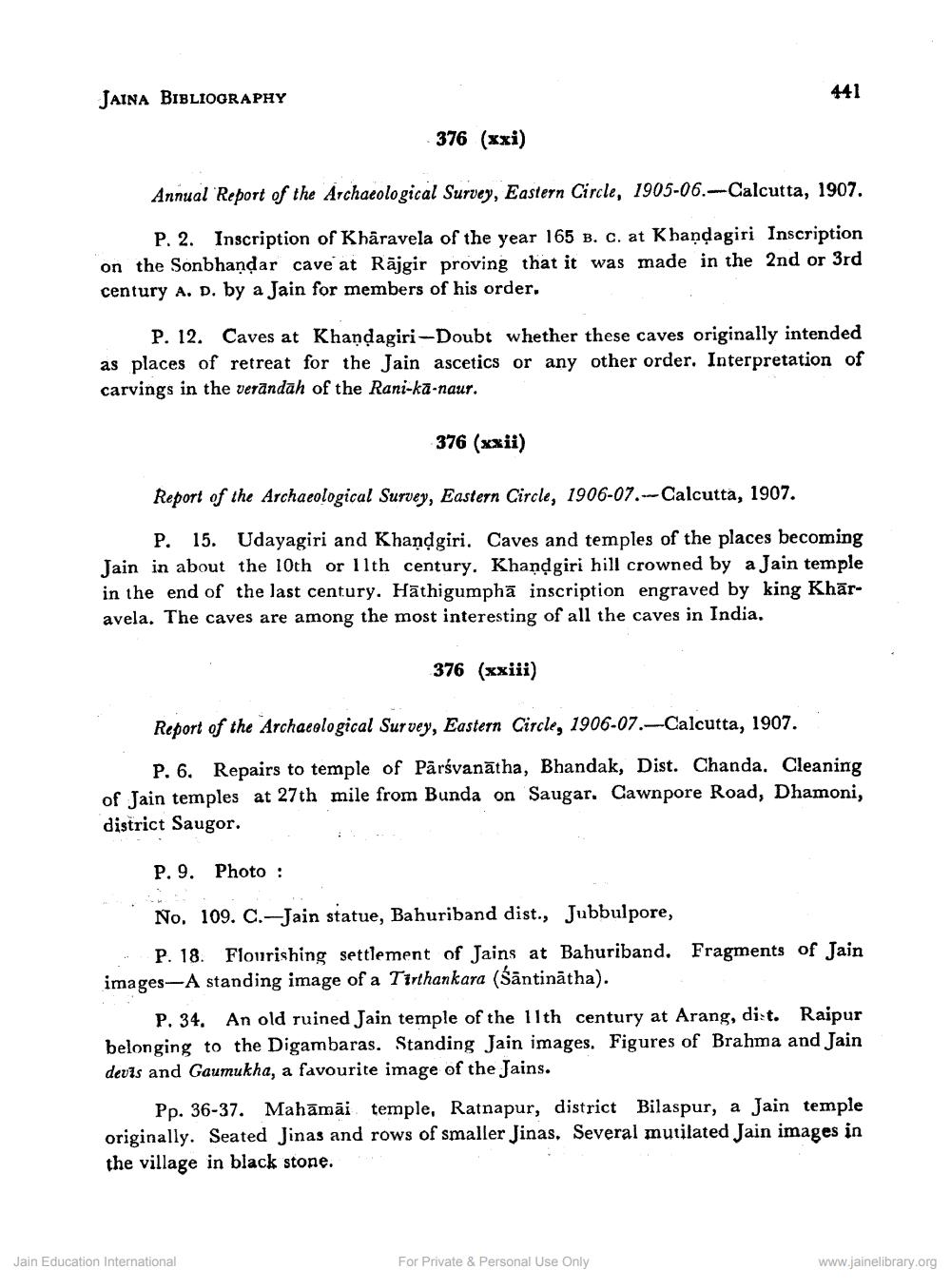________________
JAINA BIBLIOGRAPHY
376 (xxi)
Annual Report of the Archaeological Survey, Eastern Circle, 1905-06.-Calcutta, 1907.
P. 2. Inscription of Khäravela of the year 165 B. c. at Khandagiri Inscription on the Sonbhandar cave at Rajgir proving that it was made in the 2nd or 3rd century A. D. by a Jain for members of his order.
441
P. 12. Caves at Khandagiri-Doubt whether these caves originally intended as places of retreat for the Jain ascetics or any other order. Interpretation of carvings in the verandah of the Rani-ka-naur.
376 (xxii)
Report of the Archaeological Survey, Eastern Circle, 1906-07.-Calcutta, 1907.
P. 15. Udayagiri and Khandgiri. Caves and temples of the places becoming Jain in about the 10th or 11th century. Khandgiri hill crowned by a Jain temple in the end of the last century. Hathigumpha inscription engraved by king Khäravela. The caves are among the most interesting of all the caves in India.
376 (xxiii)
Report of the Archaeological Survey, Eastern Circle, 1906-07.-Calcutta, 1907.
P. 6. Repairs to temple of Pärivanatha, Bhandak, Dist. Chanda. Cleaning of Jain temples at 27th mile from Bunda on Saugar. Cawnpore Road, Dhamoni, district Saugor.
P. 9. Photo :
No. 109. C.-Jain statue, Bahuriband dist., Jubbulpore,
Flourishing settlement of Jains at Bahuriband. Fragments of Jain images-A standing image of a Tirthankara (Santinatha).
P. 34. An old ruined Jain temple of the 11th century at Arang, dist. Raipur belonging to the Digambaras. Standing Jain images. Figures of Brahma and Jain devis and Gaumukha, a favourite image of the Jains.
Pp. 36-37. Mahamai temple, Ratnapur, district Bilaspur, a Jain temple originally. Seated Jinas and rows of smaller Jinas. Several mutilated Jain images in the village in black stone.
Jain Education International
For Private & Personal Use Only
www.jainelibrary.org




